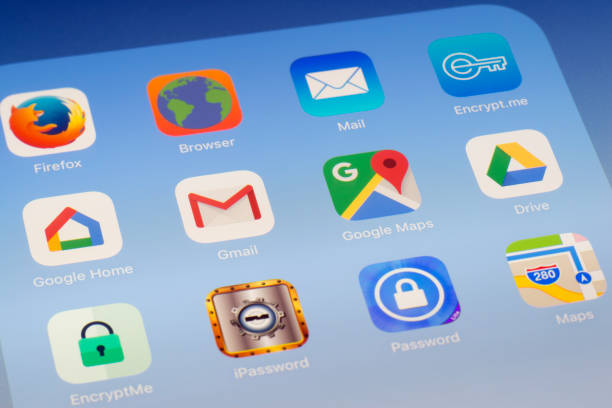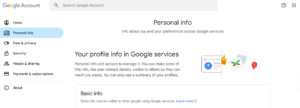How to Secure your Gmail Account in 2025 | Step-by Step

As cyber threats become increasingly sophisticated, Gmail remains a prime target for hackers; This is why you must implement a robust security measures to protect your personal information and prevent unauthorized access. Here’s a comprehensive, step-by-step guide on how to secure your gmail account.
READ ALSO: 10 Reasons you Must Protect Your Gmail Account at all Cost
How to Secure your Gmail Account in 2025 | Step-by Step
Here’s a comprehensive, step-by-step guide to fortifying your Gmail account, complete with reasons each of those steps are important;
1. Create a New, Strong And Unique Password
First of, You need a strong, unique password for your Google account. The best way to ensure that you’ve nailed this requirement is to use your password manager’s tools to generate a brand-new password. However, if you do not wish to use the password manager tool, here are some tips for creating strong passwords:
- Use a mix of uppercase and lowercase letters, numbers, and special characters.
- Avoid easily guessable information like birthdays or common words.
- Consider using a passphrase—a sequence of random words—to enhance security.
Example: Instead of using “Password123,” opt for a passphrase like “Blue!Sky$Dolphin#82” for increased security.
Why It’s Important: Weak passwords can be cracked in under a minute.
2. Enable Two Factor Authentication
Just before you leave the Google Account Security page, scroll to the Two-factor authentication section and make sure this option is turned on. Use the default option to receive codes via text message on a mobile phone you personally own. (You can set up other, more advanced forms of verification as well, but we’ll get to those later.)

- In your Google Account settings, go to the “Security” section.
- Under “Signing in to Google,” select “2-Step Verification” and follow the setup process.
After enabling 2FA, logging in from a new device prompts a verification code sent to your phone, preventing unauthorized access.
Why It’s Important: Even if someone knows your password, they cannot access your account without the second verification step.
3. Print Out Recovery Codes
The next step is to save a set of recovery codes. Recovery codes are your backup lifeline to your Gmail account if you lose access to your phone or recovery methods, such as two-factor authentication. These codes are unique, one-time-use passwords that you can use to regain access to your account in emergencies.
Having them printed and stored securely ensures you’re never locked out permanently. Without this backup, you risk being permanently locked out.
READ ALSO; Should You Accept Website Cache and Cookies?
How to Generate and Print Recovery Codes
- Log into Your Google Account; Go to Google Account Security.
- Navigate to Two-Step Verification; Scroll to the “Signing in to Google” section and select “2-Step Verification”.
- Access Backup Codes; Scroll down and click on “Backup Codes”. You’ll see a list of ten unique one-time-use codes.
- Download or Print the Codes; Click on “Download” to save the codes as a text file, or select “Print” to create a hard copy.
- Store Them Safely; Keep the printed codes in a secure location, such as a safe, and avoid storing them in easily accessible or unsafe places like your wallet or desk.
Why It’s Important: If your phone is lost, stolen, or damaged and you can’t receive 2FA codes, recovery codes become the only way to regain access to your account. Even if you lose access to your recovery email or phone number, printed codes serve as a fallback option to recover your Gmail account.
Recovery codes save time compared to lengthy account recovery procedures, such as verifying your identity through multiple steps or providing account creation details.
SEE ALSO: How to Make Your Number Appear as Private Number or Unknown
4. Add a Recovery Email Address
Registering a recovery email address is an important security step in this regard. If Google detects suspicious activity or you lose access to your account, Google can send a verification code to your recovery email, enabling you to reset your password and you’ll receive a notification at this address. Ensure your recovery phone number and email address are current to regain access if you’re ever locked out. Below are the steps to go about it:
- In your Google Account settings, navigate to the “Personal info” section.
- Update your recovery phone number and email address.

Why It’s Important: Accurate recovery information allows you to recover your account quickly if you forget your password or detect suspicious activity.
5. Set up Your Smartphone as an Authenticator
Using your smartphone as an authenticator is a smart and secure way to protect your Gmail account. Instead of relying on SMS-based verification codes, which can be intercepted, an authenticator app like Google Authenticator or Authy generates time-based, one-time codes directly on your phone.
These codes refresh every 30 seconds and work even without an internet connection. To set it up, go to your Google Account’s “2-Step Verification” section, select the “Authenticator App” option, and scan the QR code using your app. Once linked, the app will generate login codes whenever needed.
For added security, always back up the app’s data or store recovery keys in case you lose your phone. This method is not only more secure but also faster and more convenient, especially when you’re in areas with poor network service.
6. Regularly Review Account Activity
Monitoring your account activity helps detect unauthorized access early. To do this, follow the steps below:
- In your Gmail inbox, scroll to the bottom right corner and click “Details.”
- Review the list of recent activity, including access type, location, and date/time.
Why It’s Important: Unrecognized activity can indicate that someone else has access to your account. If you notice a login from a location you haven’t visited, it’s a red flag that warrants immediate action, such as changing your password.
SEE ALSO How to Check Your Mobile Network Speed
7. Manage Third-Party App Access
Review and control which third-party apps have access to your Google Account. Here’s how to do it;
- In your Google Account settings, go to the “Security” section.
- Under “Third-party apps with account access,” review and remove any apps you no longer use or trust.
An old app you no longer use still has access to your account. Removing its access reduces potential vulnerabilities.
Why It’s Important: Starting January 2025, less secure apps that use only your username and password will no longer be supported – Google Support.
8. Keep Your Devices Secure
Ensure that all devices used to access your Gmail account are secure, use up-to-date antivirus software, enable device encryption, set up a strong screen lock or biometric authentication, and ensure the device is physically secure.
Why It’s Important: Compromised devices can lead to unauthorized access.
READ: Starlink in Nigeria vs Local Networks: A Comprehensive Review
Conclusion
Securing your Gmail account in 2025 isn’t just about protecting your emails—it’s about safeguarding your digital life. Think of your Gmail account as the vault to your personal information, finances, and connections; keeping it secure is non-negotiable.
The good news? These tips don’t require you to be a tech wizard—just a little effort to stay ahead of potential risks. So, take action today and give yourself the peace of mind that comes with knowing your account is safe, no matter what the digital world throws your way!
Now that you know how to secure your Gmail account in 2025, why not share this guide with friends and family to help them protect their accounts too? Cybersecurity is everyone’s responsibility, and your share could make a big difference!
Also, we’d love to hear your thoughts—did any of these steps stand out to you? Do you have questions about any of the methods, or maybe even additional tips that worked for you? Drop a comment below and let’s keep the conversation going. Together, we can build a safer digital community! 🌐💪

